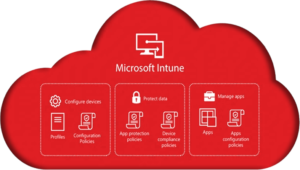The only thing lacking from Service Manager is a web console for analysts. To fill this gap, some third party companies have written and released IIS applications to fill this gap. Two of those are GridPro WebFront for Service Manager (https://www.gridprosoftware.com/en/products/webfront) and Cireson SCSM Web Console (https://www.cireson.com/app-store/scsm-web-console/). Both of these applications do what they are advertised to do. This article will not compare them against one another, but will list their features. I am not going to go much into the installation and configuration of these products, as both companies have excellent documentation.
A web console may be needed in an environment where analysts run Apple computers instead of Windows computers. The Service Manager console is not available for Mac OS. It can also be beneficial for mobile devices (cell phones, tablets, etc.) to have a web console.
GridPro WebFront for Service Manager
WebFront is a Silverlight application. It appears and functions exactly like the “Work Items” node in the Service Manager console. This makes an easy transition from console to web for your analysts. You can create items from templates, and create linking items (i.e. Change Request from Incident) right from the web console.
The web console also transfers any views and user roles that are set up. This means that I have exactly the same look and feel as I do from the console, down to the column heading I specify when building a view. This console also works in Internet Explorer, FireFox, or Chrome, and works on Mac OS X (as long as Silverlight is installed).
The one downside to WebFront is it is Silverlight. It will not run on a mobile device. To fix this, GridPro has another application called MobileFront for Service Manager. This application runs nicely on mobile devices, and is written in HTML5, so it will run on about anything.
Cireson SCSM Web Console
This biggest advantage of Cireson’s product is that it is written totally in HTML5, meaning it will work on any modern browser and on mobile devices. It presents only what your analysts will need on a daily basis in a simple web form. It allows them to submit new Incidents, Change Requests, or Service Requests from the “New Work Item” tab. They can view any incidents assigned to members of their team, all current work items in the system, and search for work items.
The “Configuration Items” tab also allows analysts to view all computers and users in the system. I cannot act on any information here, but I can view them. In the console, I can click on a computer or user and get details about the item; that is not possible here.
The one feature that is missing is the ability to link incidents to change or service requests. I cannot create a change or service request off an incident from this web interface. Another downside is that this web console must be installed on the Service Manager management server. That can be a disadvantage if you wanted it to be on its own server, or a central IIS server or cluster.
Summary
Both of these web consoles can get the job done and function well. I would encourage anyone looking to expand the analyst capabilities of their Service Manager environment to take a look at these.





